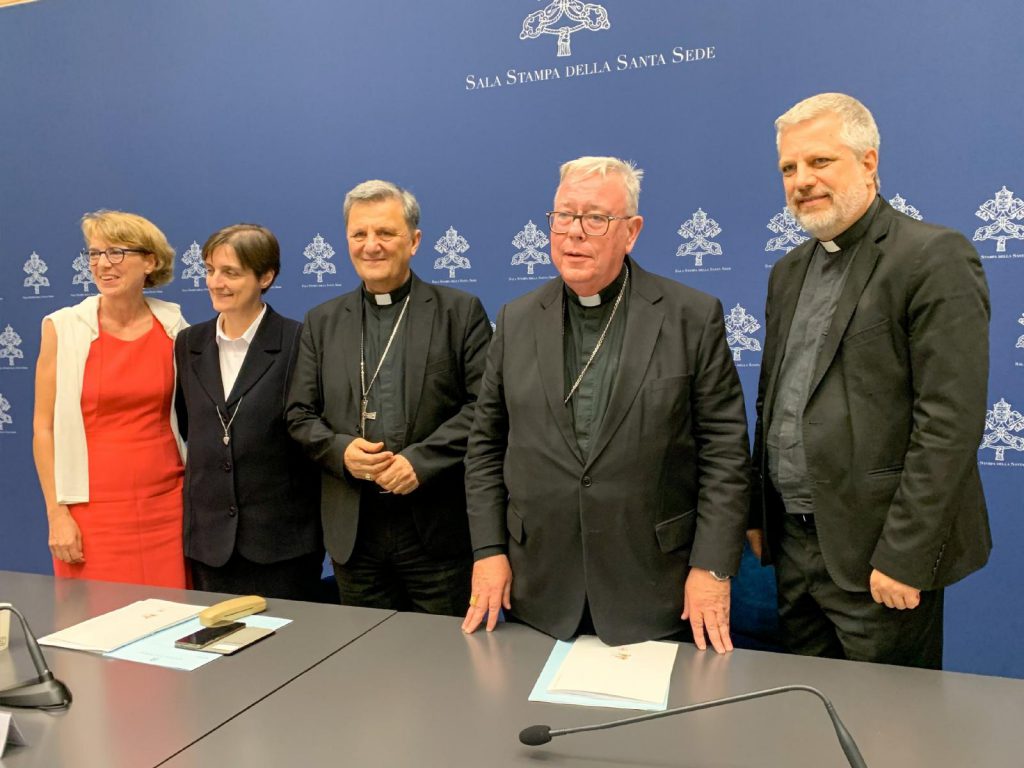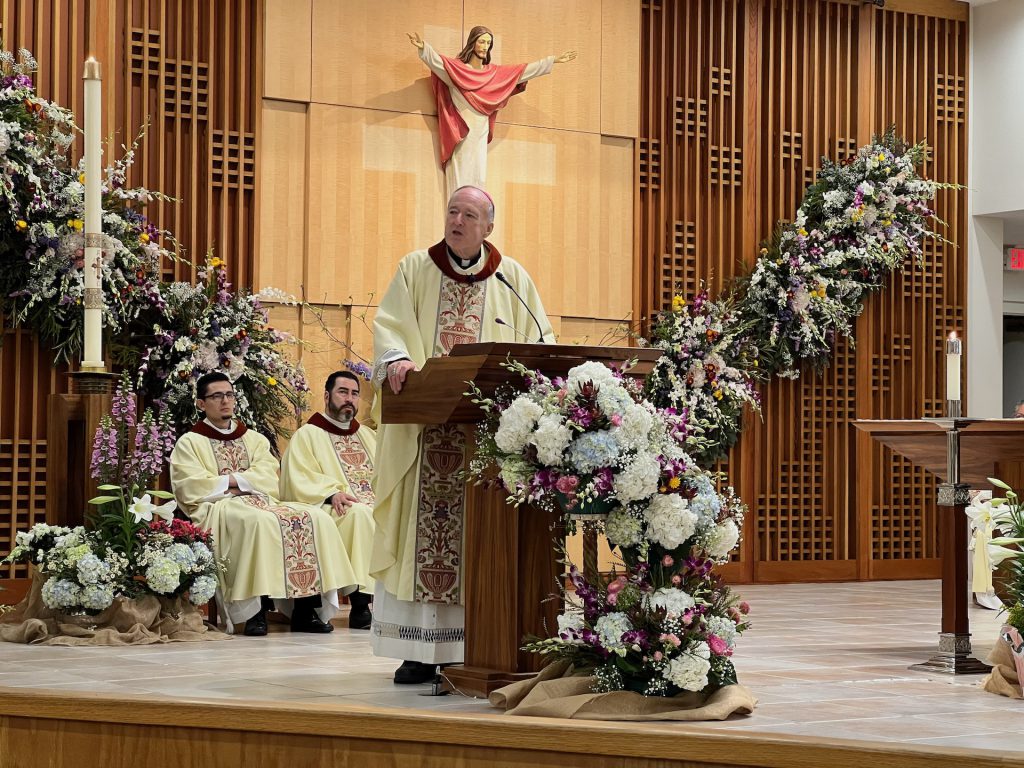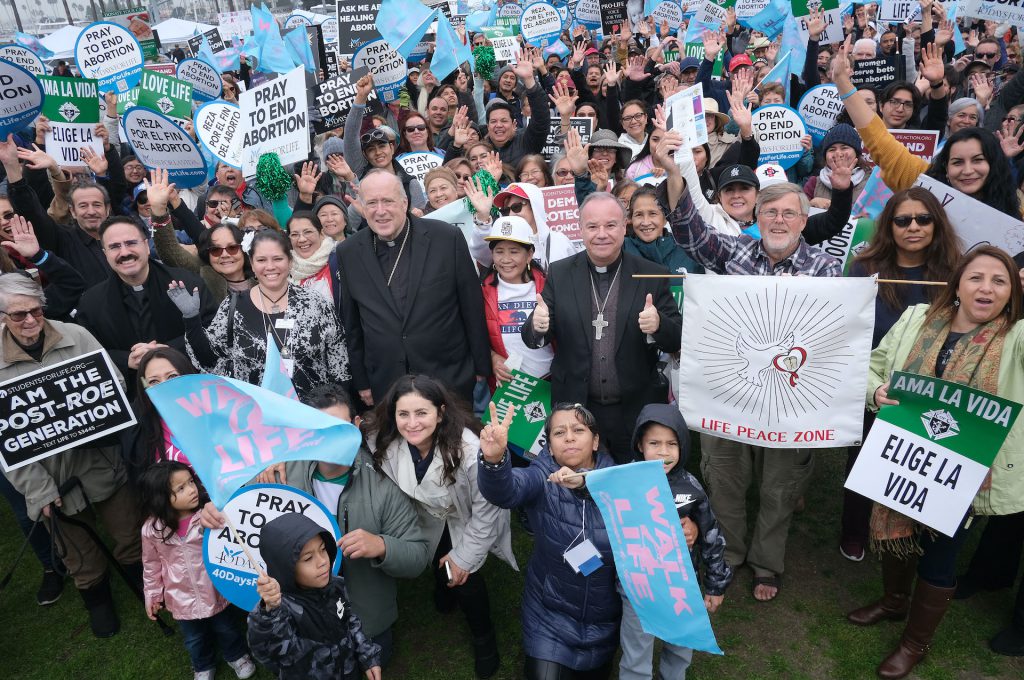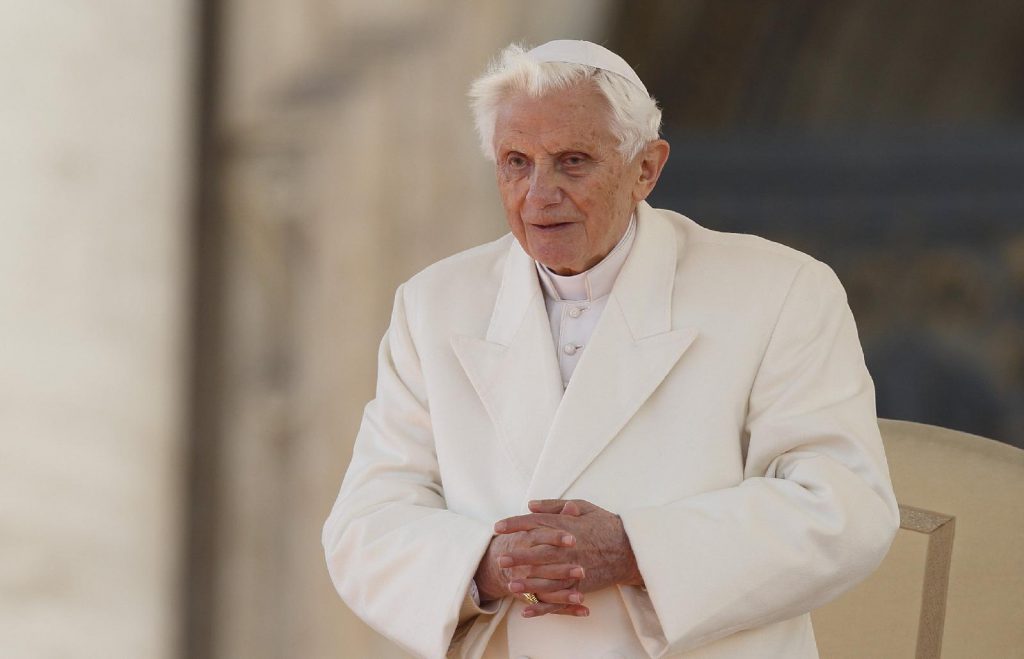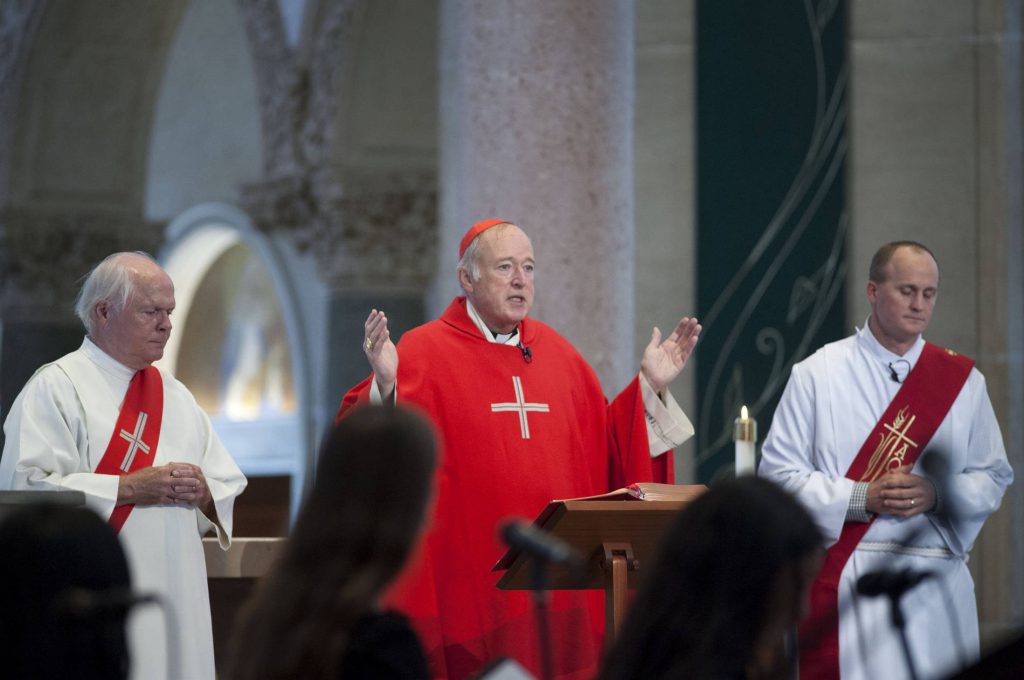SAN DIEGO — Bishop Robert McElroy was installed as the sixth bishop of San Diego on April 15, 2015, at St. Therese of Carmel Parish in Carmel Valley. In his homily, the bishop foreshadowed the central elements that would illuminate his leadership of the San Diego Diocese.
The following is the text of his homily.
In January of this year, America was riveted for nine days as Tommy Caldwell and Kevin Jorgeson set out to accomplish a task that for over three decades had been labeled impossible – free climbing the dawn wall of El Capitan in Yosemite Valley.
Free climbing means using only one’s hands and feet to ascend a rock’s natural features, while employing ropes and other gear only to stop a fall. For two years Tommy and Kevin had mapped out their strategy for conquering each of the 32 pitches, or sections, of El Capitan, ingeniously creating routes that relied upon a miniscule number of natural crevices in the almost sheer granite of the dawn wall. Over these two years, they had forged both a deep friendship and a mutual partnership that relied at some moments on Tommy’s greater skill in climbing and at other moments on Kevin’s optimism and athleticism. They began their climb as a team and resolved that no matter what happened they would complete it as a team.
Over the first six days they made it up 14 grueling pitches, and on the seventh day Tommy, the more experienced climber, made it up the 15th pitch, which is the most treacherous section of the dawn wall.
But Kevin remained trapped on the 15th pitch. For the next four days he fell time and again in his effort to overcome the flawlessly smooth face of this most difficult section of El Capitan. Now time became the enemy for both climbers, because the longer they remain exposed on the wall the more likely that a bad weather front would move in and end the climb for both of them.
Kevin was aware that he was holding Tommy back, and he pleaded with his friend and mentor to abandon him and move onward so that at least one of them might conquer the dawn wall. But Tommy would not move on; more than anything he wanted them both to finish together as they had started together. For a total of ten days he stood with Kevin as Kevin tried to overcome the 15th pitch, and Tommy made clear that he would never abandon his friend.
Miraculously, on the eleventh day Kevin conquered the 15th pitch, and they began to move up the final one thousand feet together, accompanying each other until they reached the plateau, where their families and the world were waiting.
The grace of mutual accompaniment. This was the real miracle that occurred on El Capitan in January of this year. And it is this grace of mutual accompaniment that must form the heart of the relationship of a bishop with his local church.
This year we celebrate the 50th anniversary of the close of the Second Vatican Council, the great grace to the Church in the 20th century. The Council used magnificent images to describe the Church: the field of God, the mystical body, the sheep gate, the holy temple of God. But the overriding conciliar image of the Church emerges in today’s second reading from the first letter of Peter: You are “a chosen race, a royal priesthood, a holy nation…who in times past were not a people but now are the people of God.” The council teaches that the Church is constantly on a pilgrimage toward the heavenly kingdom, guided always by the Lord.
This image of the Church as the pilgrim people of God demands that the ministry of a bishop be enmeshed in a culture of mutual accompaniment that suffuses the local church. The theological foundation for this culture of mutual accompaniment lies in the priesthood of all believers and the universal call to holiness. The most important religious identity for disciples of the Lord consists not in any particular office that they hold, or any status in orders or consecrated life, but in the grace of baptism which brings membership in the church. Saint Augustine expressed this reality clearly: for you I am a bishop; with you I am a Christian.
Pope Francis has movingly described the elements of Christian accompaniment: It is rooted in a sense of the sacredness of the other and requires a continual stance of listening. Accompaniment reflects the closeness and compassionate gaze of Christ which heals, liberates and encourages growth in the life of the Gospel. Accompaniment embraces prudence, understanding, patience and openness to the Spirit. Most importantly of all, mutual accompaniment demands a sense of collaboration among the bishop, the priests who are his primary collaborators, lay leaders, those in consecrated life and the diaconal community in a manner which deepens the unity of the people of God and increases the harvest of the Gospel within the local Church.
As I begin my ministry of service in this magnificent local church of San Diego, I pray that it will always be shaped by this vision of mutual accompaniment. And I pray that this will be especially true in facing three central challenges which the Scriptures and the Universal Church place before us at this moment in the history of our diocese.
The first of these challenges is the proclamation of the unlimited mercy of God.
We have just celebrated Divine Mercy Sunday, which Pope John Paul II established as a witness to the centrality of mercy in the life of the church. Pope Benedict captured the essence of this theme when he taught that “mercy is the central nucleus of God’s message; it is the very name of God, the face with which he revealed himself in the old covenant and fully in Jesus Christ….”
In today’s Gospel we see that face of mercy as Jesus encounters the Apostles for the first time after they deserted him at the time of his arrest, leaving Christ to face death alone. Like the father in the parable of the prodigal son, Jesus’ words are not of criticism or reproach, but only of mercy, acceptance and joy. “Peace be with you. As the Father has sent me, I am sending you.” Then he breathed on them and said, “receive the Holy Spirit.’”
If this is the paradigm for God’s mercy, then as Pope Francis concluded last Sunday in his proclamation of the jubilee year, mercy must be “the very foundation of the church’s life. All of her pastoral activity should be caught up in the tenderness she makes present to believers; nothing in her preaching and in her witness to the world can be lacking in mercy.”
This does not mean evacuating the moral law of its substance and challenge. But it must mean that the Church is called to follow the pastoral pattern of the Lord himself toward all those he encountered in the Gospels: first embracing them with loving mercy, then healing their wounds, and only then proclaiming the moral law of reform.
This is the pastoral paradigm that flows from the recognition that we cannot know fully the mystery or the culpability of the other. This is the paradigm which “reflects the fragrance of Christ’s closeness and personal gaze.” This is the paradigm that banishes judgmentalism and affirms that showing mercy is a fundamental criterion for ascertaining who God’s children truly are in the life of the Church and the world.
A second challenge for our ecclesial community is always to witness to the grace of God which is present in the cultural diversity of the church.
The chosen race, the royal priesthood spoken of in today’s second reading, draws from and unites the disparate peoples of the world. Just as the first fruits of the Spirit on the day of Pentecost were reflected in the assembly of thousands of men and women from every nation who embraced the Gospel of Jesus Christ and were baptized, so the community of Christ’s church is called to embody and cherish this element of catholicity.
In the Diocese of San Diego, virtually every nationality and culture is vibrantly present — Hispanics, Filipinos, Irish, Native Americans, Vietnamese, Italians, African Americans, Poles, Chinese, Germans, Portuguese and Japanese.
This diversity constitutes a powerful gift of the Holy Spirit palpably present here in our midst. There can be no more fitting place to begin my ministry of accompaniment in witnessing to God’s presence among us than by pointing to the gift that this diversity brings to our diocese, and by fostering an ecclesial culture that honors unity and diversity equally in forging this body of Christ.
One important element of witnessing to the grace of God present in the cultural richness of this local church is to reclaim our border with Mexico as a bond which unites us to the whole of the Americas, rather than as a barrier which divides us. This requires comprehensive immigration reform as a fundamental foundation for justice in our society. But just as importantly, it requires a recognition of the grace that immigrants from Latin America have provided to California, as well as a recovery of our understanding that in its essence the United States is a nation of immigrants whose greatness does not lie in ties of blood but in the ideals of freedom and justice that weld our nation together.
A third challenge to our local church is to seek to be a builder of bridges in our contemporary world. Today’s first reading from the Book of Genesis points to the beauty of God’s design for humanity – the dignity of the human person made in the image of God, the unity of the human family, and the gift of the created order as the legacy of all. Yet the world we experience in so many ways shatters these fundamental elements of the divine plan, leaving us broken and separated, alienated and factionalized. A ministry of accompaniment rooted in the Gospel must reach out to society to repair these fractures, and must constantly build new bridges to recreate the unity of the human family and protect human dignity as God has intended.
We are called to be builders of bridges by bringing into the very heart of the church and society those so often condemned to live or die on the periphery – the poor and the homeless of our nation and our world, the unborn, victims of sexual trafficking and abuse, especially clergy sexual abuse; the aged and disabled, those who are incarcerated. We are called to build bridges which span the partisan divides that now frequently separate these issues of human dignity into warring camps, and to foster an ecclesial culture which sees with the clarity of Mother Teresa and Dorothy day that all forms of marginalization which deny the dignity of the human person are antithetical to the Gospel and repugnant to God.
As a Catholic community, we must build bridges with the religious communities of San Diego and Imperial Counties, so that the church contributes to an ecumenical and interreligious culture that testifies to our common witness to the transcendent.
And as a builder of bridges, we must foster pathways both within and outside the Catholic community to rebuild the shattered civic and political unity of our nation which is essential to the realization of the common good for our society and our world.
Finally, I would hope that as a hallmark of the work of the church in the next five years, we will be especially dedicated to building bridges to the young adults of Imperial and San Diego counties, understanding that the church can often seem distant or uninterested in their lives. These bridges must reach out to young adults at our universities, to those who grow our food, to the young adults who defend our freedom through military service, to those who work long hours in the vibrant but often exhausting jobs which propel our local economy, and to those who are still struggling to find their place in the world. These bridges to our young adult communities must speak piercingly of the personal love of God, of the joy of the Gospel and of the fulfillment which comes from genuine missionary discipleship
Seeking to build a culture of mutual accompaniment, proclaiming the extravagant mercy of God, witnessing to the grace of cultural diversity, building bridges to reflect God’s vision for the human family – these are central elements of the work that God has set before us at this moment in the history of our local Church. With human eyes these challenges can seem even more impossible than free climbing El Capitan. But in our faith we are called to see the world not with human eyes, but with the vision of grace rooted in the Gospel. And we are called to journey forth from this beautiful Church today as pilgrims together, accompanying one another, not knowing at times exactly where we are going, but knowing that ultimately it is God who leads us and that in the end that is more than enough.




